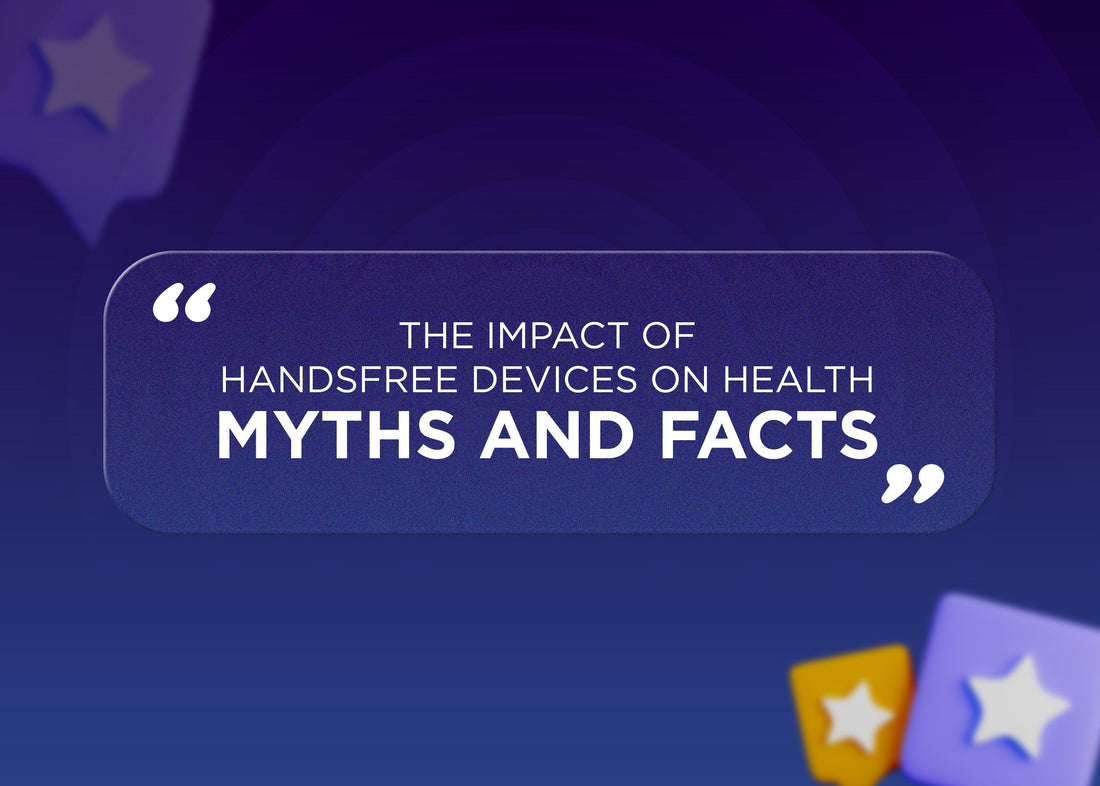
The Impact of Handsfree Devices on Health: Myths and Facts
Share
The Impact of Handsfree Devices on Health: Myths and Facts
Handsfree devices have become an essential part of modern life, whether for calls, music, work, or gaming. However, with their widespread use, various health concerns and myths have emerged about their impact. Some believe that handsfree can cause hearing damage, radiation exposure, or ear infections, while others argue that they are completely safe.
At RONiN, a smart wearable & tech accessories brand, we believe in providing reliable information so users can make informed decisions. In this blog, we will separate myths from facts regarding Handsfree and their effects on health.
1: Myth: Handsfree Can Cause Hearing Loss
Fact: Hearing damage is linked to volume, not the device itself
One of the most common misconceptions is that using handsfree leads to hearing loss. However, studies show that it’s not the device but excessive volume levels that can harm hearing. Listening to music or calls at very high volumes for long periods can strain the inner ear’s sensory cells, leading to hearing issues over time.
How to Use Handsfree Safely
- Keep the volume at 60% or lower of the maximum limit.
- Follow the 60/60 rule: Listen at 60% volume for no more than 60 minutes at a time.
- Use handsfree with noise isolation to avoid increasing volume in noisy environments.
With proper volume management, handsfree can be used safely without risking long-term hearing damage.
2. Myth: Bluetooth Handsfree Emits Harmful Radiation
Fact: Bluetooth devices emit low-level, non-ionizing radiation
Some people worry that Bluetooth handsfree emits harmful radiation that can damage the brain. However, Bluetooth technology operates at very low power levels—much lower than mobile phones. The radiation emitted is non-ionizing, meaning it does not have enough energy to damage DNA or tissues.
Understanding Radiation Exposure
- Mobile phones operate at a higher radiation frequency than Bluetooth handsfree.
- Bluetooth handsfree emit 100 times less radiation than a regular phone call.
- Regulatory bodies, including the World Health Organization (WHO), classify Bluetooth devices as safe.
For users who prefer wired connectivity, Handsfree offers wired options that eliminate concerns about Bluetooth usage.
3. Myth: Handsfree Can Cause Ear Infections
Fact: Bacteria buildup due to improper cleaning is the real issue
Handsfree themselves do not cause ear infections. However, improper hygiene—such as sharing earbuds or not cleaning them—can lead to bacterial buildup that may result in infections.
How to Keep Handsfree Hygienic
- Clean earpieces regularly using a soft cloth or alcohol wipes.
- Avoid sharing handsfree with others.
- Store handsfree in a clean case to prevent dirt accumulation.
By following these steps, users can prevent ear infections and maintain hygiene while using handsfree devices.
4. Myth: Handsfree Affects Brain Function
Fact: There is no scientific evidence linking handsfree to brain damage
Concerns about handsfree impacting brain function stem from misconceptions about electromagnetic waves. While handsfree do emit small electromagnetic signals, they do not have any proven harmful effects on brain function.
Scientific Findings
- Studies have not found any link between handsfree use and brain damage.
- The energy emitted is far below harmful thresholds set by global health organizations.
For those concerned about extended usage, taking regular breaks and practicing healthy screen habits can help reduce overall exposure to electronic devices.
5. Myth: Wireless Handsfree Batteries Can Cause Harmful Exposure
Fact: Lithium-ion batteries are safe when used properly
Wireless handsfree rely on lithium-ion batteries, which some people fear may overheat or leak chemicals. However, modern handsfree batteries are designed with safety measures that prevent such risks.
Best Practices for Safe Use
- Use manufacturer-approved chargers to prevent overheating.
- Avoid overcharging wireless handsfree for extended battery life.
- Store handsfree in a cool, dry place to prevent battery wear.
Wireless handsfree technology has evolved to become safer and more efficient, ensuring no harm to users when handled correctly.
6. Myth: Handsfree Cause More Ear Fatigue Than Regular Speakers
Fact: Prolonged listening at high volume, not handsfree itself, causes ear fatigue
Many people experience ear fatigue or mild discomfort after long listening sessions. This is not due to handsfree itself but rather prolonged use at high volumes or poorly fitting earbuds.
How to Prevent Ear Fatigue
- Choose ergonomically designed handsfree with a comfortable fit.
- Take breaks every 60 minutes to let ears rest.
- Adjust volume levels to a moderate range for prolonged listening.
A well-fitted handsfree device prevents discomfort and makes listening more enjoyable over long periods.
Final Thoughts
Many of the concerns about handsfree devices are based on misconceptions rather than scientific evidence. When used correctly, handsfree offer a safe, convenient, and effective way to enjoy audio while maintaining communication.
By managing volume levels, practicing proper hygiene, and using manufacturer-recommended charging practices, users can enjoy the benefits of handsfree without worrying about negative health effects.
For high-quality, safe-to-use handsfree devices, explore Ronin and find a handsfree that fits your needs while ensuring a safe and enjoyable audio experience.





















































































